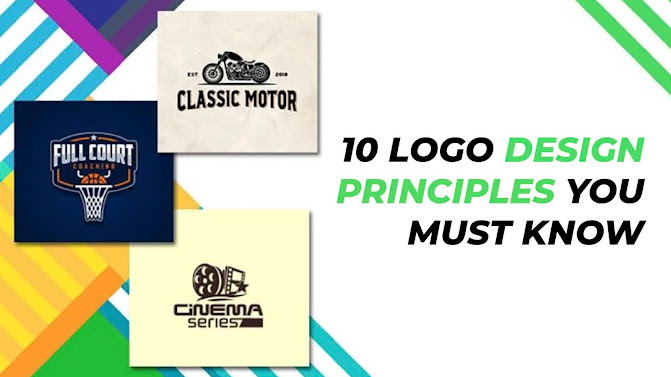Logo Basics | Every Essential Thing You Want To Know About A Logo
Our favourite companies are easily recognized by their
logos, which can be made up of words or graphics. So, there is so much more you
can do with your logos, too! Your brand's identity is built on the foundation
of a strong logo. It helps the client comprehend what you do, who your company
is and what it stands for. But how much responsibility can a little picture/text
can bear? Well, it can handle a lot, but only if it is used to its fullest!
Before Diving Into Anything, Let Us Understand What A Logo Is?
An organization's logo is a combination of words or visuals
that are used to identify the organization. A company's mission and core
beliefs may be encapsulated in its logo.
When it comes to logo design, it's all about defining a
company's visual identity. A logo may include a symbol or brand mark, a
logotype, and a slogan, depending on the type.
What Is The Purpose Of A Logo?
Is the point of logos is to accomplish anything other than
looking good? Yes! Logos are being used for a variety of purposes such as,
A Logo Makes You Stand Out Like A Sore Thumb
The most essential role of a logo is to provide your firm a
distinctive identity that sets you apart from your competitors.
A logo is very essential and vital which it comes to making
you stand out from the crowd. In order to distinguish yourself from others,
you'll need to know what your rivals' logos look like.
Make sure you keep your logo simple, do not complicate it
just to look extremely different. Even if your brand is a little out of the
ordinary, you don't want to confuse your audience with complex logos.
A Logo Speaks About Your Business!
A well-designed logo serves as a way for your customers to
learn more about your business, such as your industry, service, target
demographics, and brand values.
As an example, a software business may include circuit symbols
in its logo. Alternatively, they may choose a certain hue to convey their
dedication to environmental stewardship. They may also utilize a snazzy
typeface to make it clear that they're a high-end brand. You can also
incorporate your brand identity into your logo.
Gives Your Brand Recognition!
As a visual cue, logos serve as a constant reminder to your
clients that, well you do exist!
In other words, logos have the power to build strong
connections between a brand and its products or services. As a result, buyers
are more likely to remember your brand.
Brands like Nike and McDonalds, whose emblems are so well
known that they can be recognized even if they don't have their names attached,
are an example of this. Having a logo is an essential aspect of every brand's
identification.
How Is A Logo Different From Branding?
A lot of people confuse branding with logos even though it
is different! Although it may seem confusing, the distinction is,
·
Branding is what people think of your firm, it
may be described as the customer's overall perception of your organization. In
addition, your logo is an overall image you want to leave on your potential
customers and audience.
·
Branding includes all the factors of your
company, including the user experience, attractiveness, easy-to-use,
customer-friendly and advertisements (Billboard, commercial, website or
in-store, pamphlets, etc.). Whereas logo is the visual or text identity of your
brand and is part of branding.
Elements Of A Logo
Let's take a closer look at what a logo is built of as now
we understand what a logo is and what is its purpose.
There are seven different elements of a logo that are,
Typography
Any written or text form of the logo (which is entirely
typed) is referred to as typography. Most of the organization's logo almost
always incorporates some kind of typographic element into the final result. This
can be an abbreviation of the complete name of the company, etc.
Imagery
Symbols and icons are sometimes used in conjunction with
typography. Representative or abstract geometric components may also be used instead
of pictures.
Colour
Colour is the next step after you decide which kind of logo
you want (pictorial or text or a little of both). Your logo may be either black
and white or colourful. If you're designing a multicoloured logo, you're likely
to choose a colour theme of complementary and analogous hues.
Static Or Dynamic
As far as logo design goes, one of the most important
decisions is whether or not to develop a static or dynamic logo—one that
changes based on its environment.
If you want professional logo design help, type ‘logo designing near me’ or ‘logo designers near me’ on google and have the best
experts on your way!



Comments
Post a Comment